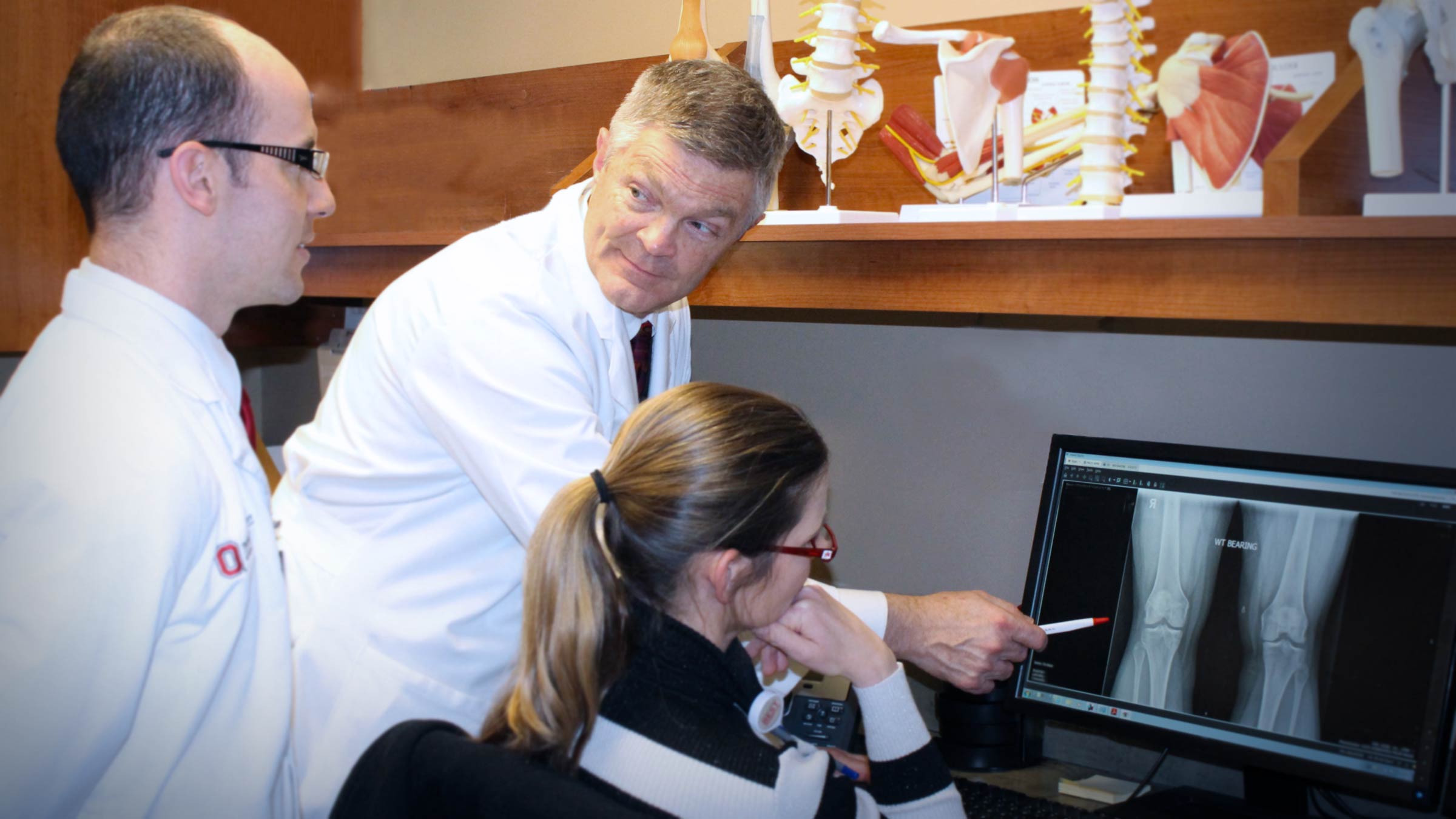
- Question What is an ACL injury?
-
Answer
If you’ve heard the term “blowing out your knee,” you’ve heard about ACL injury. An ACL injury is a tear or sprain of the ligament called the anterior cruciate ligament (ACL), that sits in the center of your knee and connects your thigh bone to your shin bone.
The ACL also aids in the rotational control of the knee. This strong band of tissue is most often torn during sudden directional change such as turning, jumping or stopping movements. An ACL injury often occurs in athletes involved in cutting sports such as basketball, soccer, football and lacrosse. When the ACL tears, the knee typically needs surgery to restore full stability.
- Question What are the symptoms of an ACL tear?
-
Answer
ACL tears create immediate pain and are often accompanied by a popping sound. Swelling usually occurs very rapidly and many patients sense that they cannot bear weight on their knee or that their knee will give way. The range of motion of the knee is often significantly limited immediately after an ACL injury.
- Question Can an ACL heal itself?
-
Answer
For all practical purposes the answer is no.
- Question How is an ACL injury treated?
-
Answer
In patients with little clinical instability and relatively minor laxity (loose knee ligaments) on exam, nonsurgical treatment may be elected. This includes a combination of physical therapy, braces and activity modification.
In patients with clinical instability and desire to pursue competitive cutting sports, surgical reconstruction is typically performed. ACL tears are repaired surgically using a graft built from either a donor or the patient themself.
Prior to the surgery, patients undergo physical therapy to strengthen the surrounding muscles and reduce swelling.
- Question What happens during ACL surgery?
-
Answer
Depending on your injury, your surgeon will customize a treatment approach. You can find a complete overview of what to expect pre-, during and post-surgery at our Ohio State Sports Medicine site.
- Question What is the meniscus?
-
Answer
Your knees contain two crescent-shaped pieces of fibrocartilage that are wedged between the shin bone and the thigh bone called meniscus. Made of a tough, cushiony material, you can think of the meniscus as a shock absorber for the impacts on your knee.
The meniscus helps distribute loads across the knee joint and protects the articular cartilage on the surface of the bones in your knee.
- Question What causes a meniscus tear?
-
Answer
Meniscus tears are very common knee injuries and are prevalent in athletes who perform twisting or turning motions on their knees, most often when the foot is planted and the upper leg is turned.
- Question What are the signs of a meniscus tear?
-
Answer
Signs of a meniscus tear can include pain in the knee, typically on the outer sides of the knee or back of the knee; swelling; a locking or catching sensation in the knee joint; and limited mobility of the knee when you try to extend it. Many people limp with a torn meniscus.
- Question Can a meniscus tear heal on its own?
-
Answer
Some meniscus tears can heal on their own, particularly if they are located on the outer third of the meniscus where there is a rich flow of blood. Your doctor can perform tests, including X-rays and MRI, to determine the nature of your injury and the best treatment options.
- Question Can you walk around with a torn meniscus?
-
Answer
Some people are able to walk on a torn meniscus. It really depends on the nature of the injury.
- Question How is a meniscus tear treated?
-
Answer
After diagnostic testing, your doctor will develop a surgical treatment plan if needed. This may include a minimally invasive procedure called knee arthroscopy, in which the surgeon repairs or trims the torn meniscus through several small incisions.
- Question Can the meniscus in the knee be replaced?
-
Answer
Yes, you can do a meniscus transplant using a meniscus from an organ donor, but that’s typically done in younger patients and not those over the age of 40. Meniscus transplants do well for the short term — but long term, they start to break down, maybe after 10 years. They’re not a miracle cure.
There is an artificial plastic meniscus called NUsurface® that we have tested at The Ohio State University Wexner Medical Center. It’s still awaiting FDA approval; that may be a year or two away. But this promises to fill a gap on our spectrum of new treatment, and I’m excited about it.
- Question Can you live without a meniscus?
-
Answer
You can definitely live without it. Your meniscus helps protect the knees from arthritis. Just because you lose some or all your meniscus doesn’t guarantee you’ll get arthritis, but you have an increased risk, depending on the mechanics and loading configuration of your knee.

Living with knee pain?
The knee specialists at Ohio State Sports Medicine can diagnose and treat your knee pain to get you back to your sport, or back to a pain-free life.
Expert care starts here




